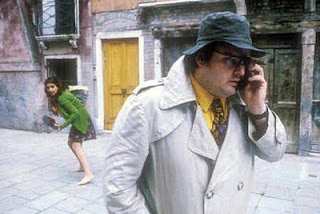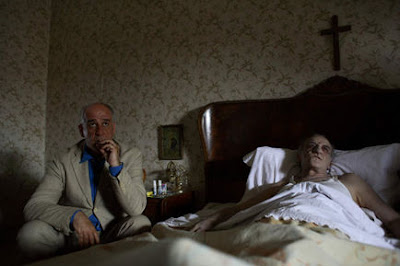1. Read the "Rascaroli passage" inside this folder which gives a definition of European road movies. To what extent, and why, does the film Bread and Tulips fall within this genre? Are you able to discern in this film "the European reality of a mosaic of nations, cultures, languages and roads which are separated by geographical, political, and economic boundaries and customs"?

To the extent Bread and Tulips finds falls with the European road movie is that the character is finding herself taken from a shifting cultural shift, in Rosalba's case from being a woman who is in a relationship, a partnership, to being a woman who is liberated by the constraints of her husband and is capable of doing anything she likes. As far as the quote goes I do not believe there is not as much a cultural or political mosaic so much as a journey into Rosalba's own self, her wants, fears, and desires so that she can be liberated, which is a strong American theme that can be seen in such films as
Easy Rider or
Badlands.
2.Compare how the film/camera portrays the city of Venice (destination) and the city of Pescara (from which the main character has left and returns)? What are the differences and similarities?

The differences between the two cities seem to be a matter of mood. The city of Pescara is almost like a dirty mid-country town where there are not so much areas built for beauty as there as areas built for function, if you know what I mean. Venice, on the other hand seems like a city where there are infinite possibilities as well as it feels a little more open and free then a suburb through the use of tall buildings and bright lights as well as there being a sense of the city being both extremely large such as the scene when Constantino first comes into the city and there is a line a mile long waiting for hotel rooms as well as the city seeming very intimate such as the scene where Rosalba first meets Constantino and they are alone. A similarity is how much brighter Pescara seems to be, like Venice when Rosalba comes back. That's just what it seemed like to me.
3.What discoveries does Rosalba make in the film, about her own identity and about her culture?

I think the main discovery that Rosalba makes in the film is that she can be alone, which is a hugely liberating concept for her. She wanted to test the boundaries and explore a life outside of the one that she has been making with her husband for so many years and try to feel something fresh, new, and exciting so that if and when (and I always thought that Rosalba secretly wanted to go back, she left too easily) Rosalba decides to come back she could at least have thought that she lived another life, for however brief of time. Naturally events and people, such as Fernando, that she experienced complicated the matters but that's another subject entirely.









